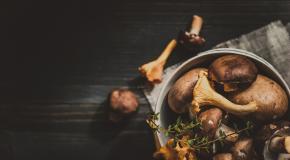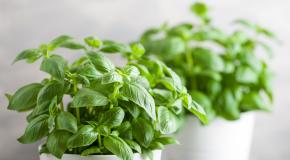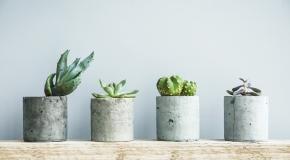Whether you want to fill a seating area with heady fragrance, attract wildlife, cover an unsightly shed or fence, or bring brightness and beauty to even the smallest space, the right climbing plant can be a gardener’s best friend.
You know it makes scents
Sweet peas: If you want to fill a garden with perfume, fragrant sweet peas are hard to beat. They are easy to grow in pots using canes, or in the ground where they can be trained up a trellis or frame for a beautiful display. Available in a wide range of colours, pick them throughout the summer to fill your rooms with fragrance.
Wisteria: With fragrant cascades of purple, blue and white flowers in spring, wisteria looks spectacular scrambling across the front of a house or up into a tree canopy. It does get very large, so need lots of space, support and pruning - and be prepared to wait if you buy a young plant as it can take up to five years to begin flowering.
Jasmine: True jasmine is a deciduous climber with scented white flowers, the fragrant yellow blooms of winter jasmine release delicate scent in the depths of winter, and evergreen star jasmine gives colour all year round with scented white flowers in summer.
Roses: There is a huge range of richly fragrant climbing roses available, from David Austin’s popular The Generous Gardener, with soft pink blooms nodding gracefully on long stems, to the vigorously rambling Seagull rose, which has glossy foliage and deliciously scented trusses of white and yellow flowers in summer.
Maximum coverage
Clematis: When it comes to quickly covering a bare wall or unsightly garden building, Clematis montana Rubens is hard to beat. With masses of sweetly scented pale pink flowers in May and June, this vigorous deciduous climber grows fast and doesn’t need regular pruning.
Potato vines: This climber will bear distinctive star-shaped lilac blooms with vivid yellow centres from midsummer into autumn and is fast-growing and easy to look after.
Boston ivy: Easy to care for, this ivy will cling to a surface once established, but it is very vigorous and will need regular pruning in smaller gardens. It’s a real head turner, with glossy green summer leaves turning to blazing crimson and orange in the autumn.
Animal magnetism
Honeysuckle: With its nectar-laden tubular white and yellow flowers and red berries, Lonicera perclymenum is a magnet for both pollinators and birds. Its blooms are intensely fragrant – particularly at night – and this shade-loving plant will quickly grow to six metres in the right conditions.
English ivy: According to the Royal Horticultural Society, more than 140 species of insect and 17 species of bird feed on ivy in Britain, making this the single best climber for wildlife. It will quickly cover any garden eyesores but will need to be checked if you don’t want it to run riot.
Potted perfection
Bougainvillea Vera: This compact evergreen shrub has stunning brilliant pink blooms and is best grown in pots so it can be brought inside for winter, making it the perfect choice for balconies or patios.
Philadelphus (mock orange): This shrub will fill your garden with the delicious scent of orange blossom - the compact variety Manteau d’Hermine with its small clusters of double creamy-white flowers is perfect if space is tight.




